Dynamic EQ is like a traditional EQ with real-time awareness because it only kicks in when the frequency actually needs to be controlled.
And, on the flip side, multiband compression splits the frequency spectrum into zones and compresses each one separately 一 giving you broad tonal control and glue.
There’s a lot of overlap between the two, but there are a few main differences you should definitely understand.
As producers, knowing all about dynamic EQ vs multiband compression can completely change the way you handle clarity and tone shaping.
That’s exactly why I’m breaking down everything you need to know, like:
- Attack, release, threshold & ratio breakdowns ✓
- Bandwidth control & crossover setups ✓
- Fixing muddy low-end with multiband ✓
- Taming harshness with dynamic EQ ✓
- Mixing and mastering with precision ✓
- Sidechaining techniques for clarity ✓
- Parallel multiband compression tricks ✓
- Serial dynamic EQ vocal shaping ✓
- Plugin picks that actually make sense ✓
- Advanced techniques to bring things to the next level ✓
- Much more about dynamic EQ vs multiband compression ✓
By knowing all about dynamic EQ vs multiband compression, you’ll be able to make cleaner, more professional decisions in your mix and master.
Plus, successfully shape dynamics and tone without over-processing like a true boss (this way, your tracks will always sound intentional and controlled).
And you’ll never have to worry about masking issues or tonal imbalance ever again.
Table of Contents
- Dynamic EQ vs Multiband Compression: Breaking it Down
- Key Features of Dynamic EQ and Multiband Compression You Should Actually Care About
- How to Decide Which One to Use in a Mix
- Layering Them Together (Yes, You Can Do That!)
- Dynamic EQ Techniques That Go Way Beyond the Basics
- Multiband Compression Moves That Actually Work
- My Favorite Multiband Compressor/Dynamic EQ Plugins Worth Checking Out
- Bonus: Advanced Techniques for Dynamic EQ vs Multi-band Compression
- Final Thoughts
Dynamic EQ vs Multiband Compression: Breaking it Down
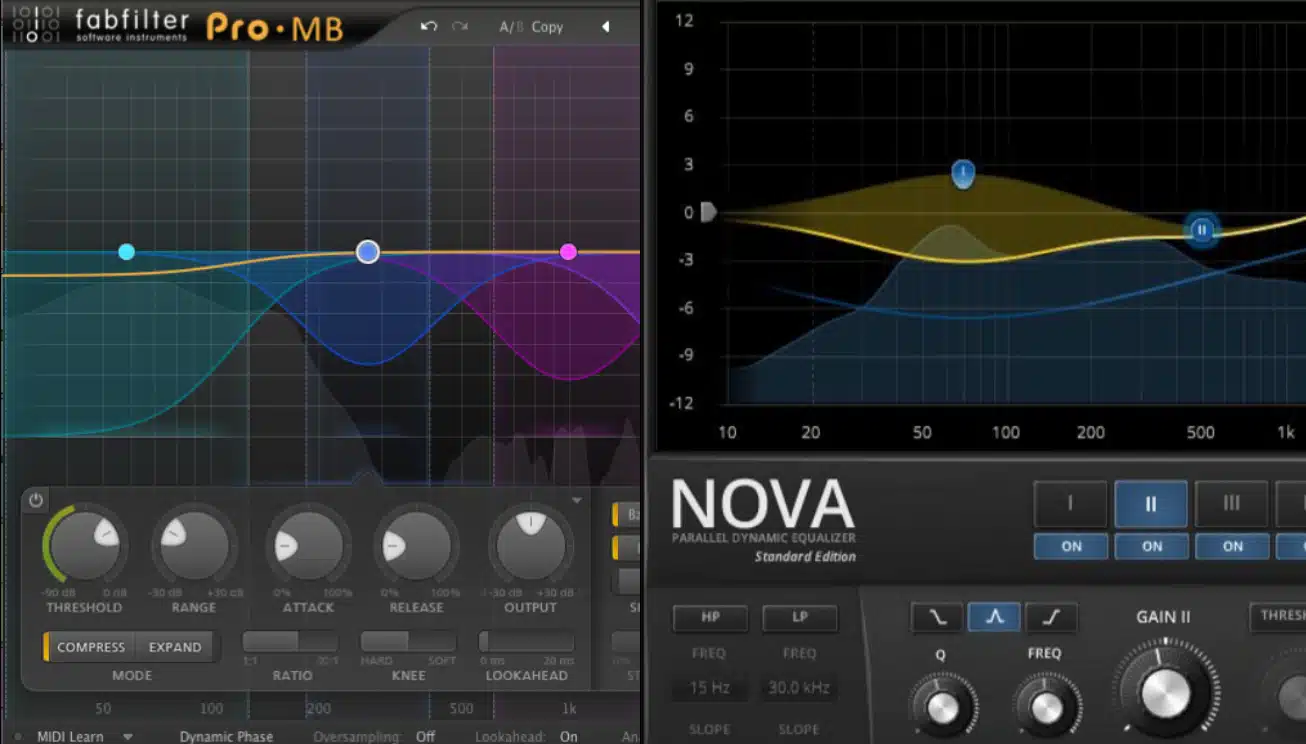
Dynamic EQ is like a traditional EQ on steroids; like a compressor, it only kicks in when a frequency crosses a certain threshold.
This allows for highly targeted movement that reacts in real-time.
For example, if a vocal has a sharp spike at 3.2 kHz during certain syllables, you can use a dynamic EQ as a de-esser to tame only that spike without touching the tone when it’s not active.
Multiband compression, on the other hand, splits the signal into multiple frequency bands (like 60–200 Hz or 2–8 kHz) just like an EQ would.
It applies compression separately in each 一 helping you control broader tonal shifts or glue elements together.
In a nutshell, you’re going to use:
- Dynamic EQ for fixing specific problem frequencies that only pop up occasionally
- Multiband compression when you need overall control over a particular frequency range
This could be like keeping the low end tight or taming harsh highs.
The main difference is how they respond because dynamic EQ is more surgical and reactive, while multiband compression is continuous and shaping.
Don’t worry if it sounds a little confusing right now because I’ll be breaking down everything you need to know so you get a super solid understanding.
Key Features of Dynamic EQ and Multiband Compression You Should Actually Care About
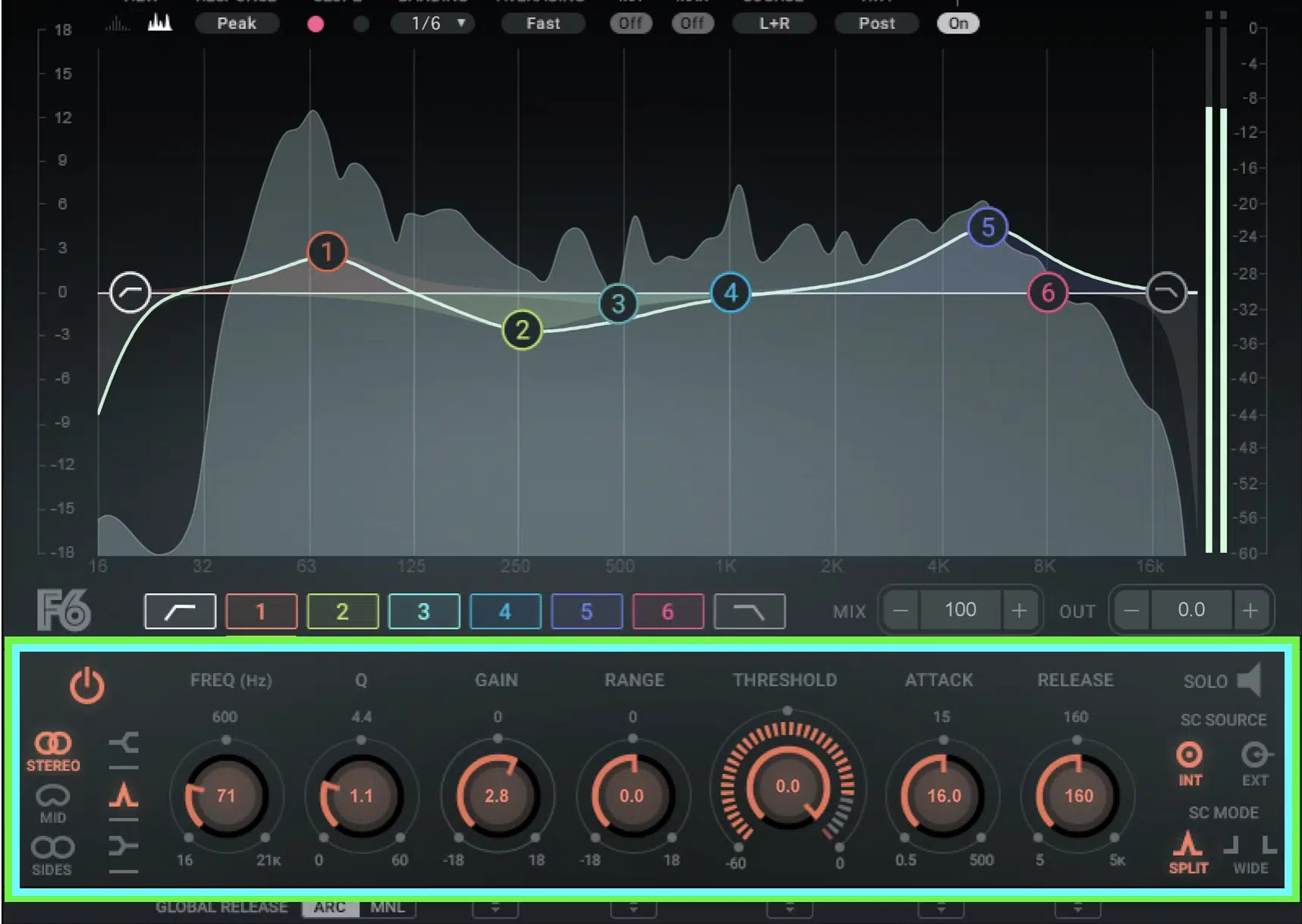
When you’re comparing “dynamic EQ vs multiband compression,” the difference often comes down to which settings you understand and actually tweak. So, let’s kick things off by talking about the features that give you full control and let you shape your sound like a true professional. Let’s dive in.
Attack, Release, Threshold & Ratio
Let’s start with attack, which controls how quickly your processor responds once the signal crosses the threshold.
On a dynamic EQ, use a fast attack (around 2–5 ms) to catch harsh hi-hat spikes at 7–10 kHz before they pierce through your mix and mess things up.
With multiband compression, a slower attack (25–40 ms) on low-end bands like 40–120 Hz helps preserve the punch of your kick or bass before it compresses the sustain.
For release, which determines how fast the effect backs off.
A setting between 70–120 ms keeps vocals and pads sounding natural, especially when reducing midrange honk around 1.5–3 kHz.
Threshold tells the plugin exactly when to react.
So, for dynamic EQ, if a vocal starts peaking around –16 dB at 3.2 kHz, you’ll want your threshold right at –18 to –20 dB for a smooth, transparent reduction of 2–3 dB.
With multiband compression, you might set a lower threshold.
I recommend around –26 dB in the low-mids (250–500 Hz) on a muddy drum bus to maintain tighter consistency across the groove.
Ratio matters more in multiband compression, for sure.
When it comes to mastering you might use a gentle 1.5:1 across a wide band from 150 Hz–5 kHz, for instance.
But, for surgical control over snappy mids, a 3:1 or 4:1 ratio works great with a mid band isolated around 800 Hz–3 kHz.
A key difference in dynamic EQ vs multiband compression is how these controls feel…
Dynamic EQ gives you smoother, momentary gain shifts tied to a single band’s movement, while multiband comp applies compression across entire zones.
So just remember that getting these settings right is absolutely everything.
PRO TIP: Always match your attack and release to the material’s rhythm. Fast for plucks or sibilants, and slower for sustained tones like vocals, synths, or overheads.
Frequency Bands, Q Widths & Crossover Points
When it comes to shaping your sound, knowing how to use frequency bands and Q widths (for both types of processors) is where things really start to click.
With dynamic EQ, you’re not limited to predefined bands.
You can drop a node exactly where the issue lives, like 3.6 kHz, set a medium Q around 1.5, and have it react only when that frequency crosses your threshold.
That’s freakin’ huge when you’re dealing with vocals where sibilance shifts slightly, trust me.
And keep in mind that multiband comp can in fact get this job done, but it really can’t touch that level of precision by far.
Now, with multiband compression, you’re dividing the entire frequency range using crossovers (like 100 Hz, 800 Hz, and 6 kHz to create four bands) and the processing stays locked inside each one.
The key difference here is:
- Multiband compression is tied to static ranges.
- Dynamic EQ gives you full surgical flexibility wherever you need it.
So, if you’re trying to smooth out low mids on a muddy guitar bus, try a multiband comp with a band from 200–500 Hz, a 2.5:1 ratio.
And, a crossover slope of 24 dB/octave for much tighter separation.
On the flip side, if a nasal 1.2 kHz honk pops out occasionally in a vocal, grab a dynamic EQ node, Q at 2.0, set the threshold at –22 dB, and let it dip just 3 dB only when needed.
PRO TIP: In the battle of dynamic EQ vs multiband compression, the unmatched precision of dynamic EQ makes it the clear winner when frequency-specific control is the goal, hands down.
Dynamic Movement vs. Tonal Balance
Dynamic movement and tonal balance is where things really split in feel and vibe because:
- Dynamic EQ gives you reactive movement
- Multiband compression handles broader tone shaping
Say your vocal only gets harsh during the loudest phrases, right?
Well, dynamic EQ is perfect for this because it only kicks in when needed 一 letting you leave the rest of the performance untouched.
For example, a gentle cut at 3.2 kHz, Q at 1.8, threshold at –20 dB, and 4 ms attack will make sure it tames spikes without dulling the overall energy.
On the other hand, if your entire hi-hat bus is a bit too bright and aggressive, multiband compression can smooth the top end consistently with a band from 6–12 kHz, ratio of 2.5:1, and release around 90 ms.
That continuous shaping is what makes multiband comp a go-to for tonal balance across whole stems or mix buses.
And when you’re trying to dial in dynamic movement (like controlling a snappy synth stab) you want to let it breathe and recover super fast.
Therefore, I advise you aim for a short release around 60 ms with dynamic EQ.
But when you’re mixing for balance, especially when mastering, multiband compression set subtly across three or four bands (no more than 1.5–2 dB gain reduction each) can really tighten things up.
Ultimately, dynamic EQ vs multiband compression comes down to movement vs tone, so make sure to always choose the one that fits the story your unique track is telling.
How to Decide Which One to Use in a Mix
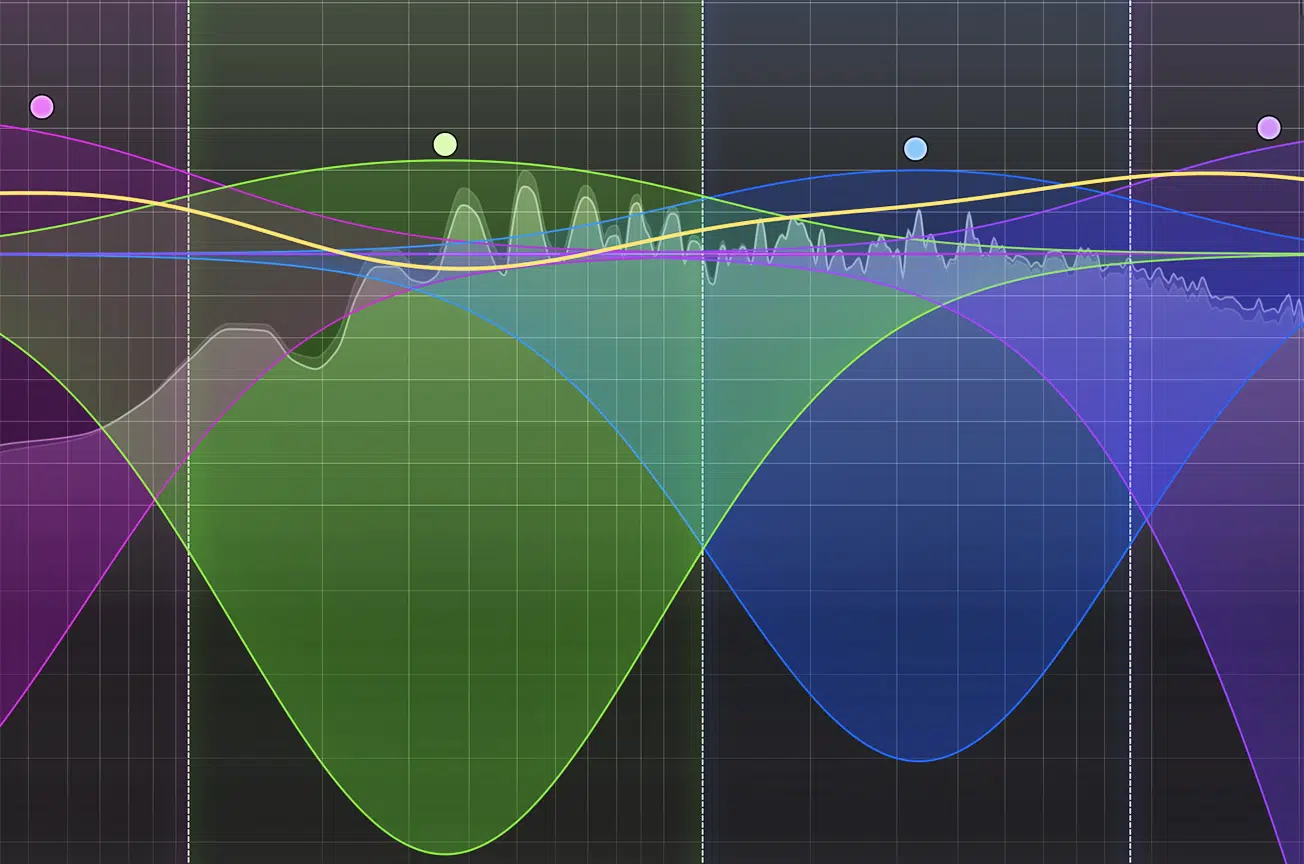
When a specific frequency jumps out only at certain moments, like a nasal 1.2 kHz bump on a vocal during louder notes, dynamic EQ is the cleaner option.
This is especially true if you set a medium Q (1.8), a fast attack (4 ms), and a threshold just below peak (around –20 dB) to dip it dynamically by 2–3 dB only when it spikes.
But if you’re dealing with consistent buildup, like a bass that stays heavy between 50–80 Hz throughout the verse and chorus, multiband compression is key.
It gives better control across time, so just split that band, set a threshold around –24 dB, ratio of 2.5:1, attack at 30 ms, and release at 140 ms to let it breathe.
In mastering situations, dynamic EQ works beautifully for subtle tweaks to harshness or boxiness (like a gentle dynamic dip of 1.5 dB at 3.8 kHz on a full mix).
While multiband compression is your go-to for shaping tonal balance across the low, mid, and high zones, so always keep that in mind.
If your hi-hats are too ‘pokey,’ dynamic EQ at 6.5–8.5 kHz with a Q around 2.5 and release at 90 ms will tame transients without killing the sparkle.
But if the whole top end is too aggressive, like a snare, hats, and air all pushing together, then a multiband high band from 7 kHz up with a soft knee, 2:1 ratio, and 60 ms attack can smooth it without losing presence.
NOTE: If you’re ever unsure about the dynamic EQ vs multiband compression decision, just ask: is this a momentary problem or a persistent tonal imbalance?
That one question will tell you everything and save you a LOT of trial and error.
And side note, for complex stems like layered vocals or bused guitars, try using dynamic EQ on individual elements for correction, and multiband compression on the full group for tone shaping/cohesion 一 thank me later.
Layering Them Together (Yes, You Can Do That!)

When a mix needs both finesse and glue, layering dynamic EQ and multiband compression can be a game-changer my friends.
Start with a dynamic EQ to fix sharp resonance…
Say you’ve got a buildup around 2.7 kHz in a vocal that jumps out on louder phrases, you can target that with a Q of 1.4, threshold at –20 dB, and a 6 ms attack to smooth it only when needed.
After that, follow it with a multiband compressor set across the midrange (300 Hz to 4 kHz), with a 2:1 ratio, attack at 25 ms, and release at 100 ms to gently tighten the body and tone.
This will give you a chain where the dynamic EQ cleans up the problem areas first, and the multiband comp shapes what’s left in a bigger, more professional way.
Just be careful with gain staging because too much reduction between stages and you’ll squash your tone, and nobody has time for that.
Make sure each tool working around 1.5–2 dB of reduction max unless you’re doing something surgical.
A lot of people ask me when to use dynamic EQ vs multiband compression, but honestly, when you layer them like this, it’s not about choosing.
It’s about knowing how to make them work together without stepping on each other’s toes.
And please don’t forget to always use your ears 一 if it sounds over-tamed, always check if both tools are fighting the same frequency and take it from there.
Dynamic EQ Techniques That Go Way Beyond the Basics
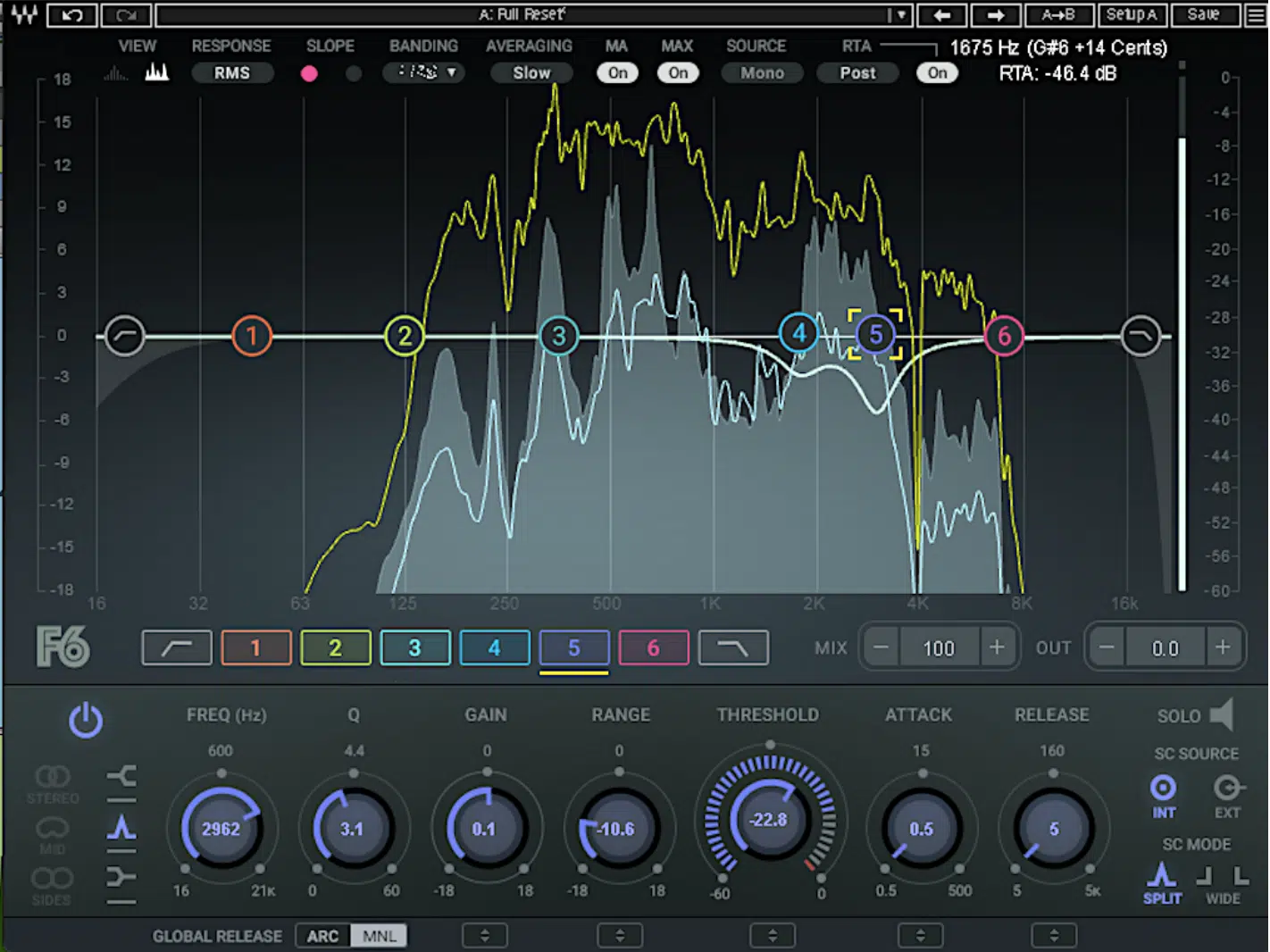
Dynamic EQ can do way more than just tame harsh vocals or resonances; it’s also a complete beast when used creatively.
One of my personal favorite tricks is sidechaining a dynamic EQ band to another sound entirely (which will seriously blow your mind).
This could be like ducking 400 Hz on a pad when the vocal comes in, using FabFilter Pro-Q 4 with the band set to dynamic mode, threshold at –26 dB, and Q at 1.8.
As well as an external sidechain from the vocal bus.
Another go-to is creating de-esser-style moves manually: set a band around 5.5 kHz with a super tight Q of 3, and pull down only 2–3 dB when harsh “S” sounds poke through.
You can also automate frequency ranges for evolving pads…
For example, let’s say you’re using a layered synth with a slight buildup at 1.1 kHz during the chorus, automate the threshold to dip more aggressively during those moments.
This lets your layers move with the arrangement instead of just statically sitting there.
Another sick technique is boosting with dynamic control.
So, try +3 dB at 1.8 kHz with a high threshold (–12 dB) so you get presence, but only when the source isn’t already too loud.
In the conversation of dynamic EQ vs multiband compression, this type of killer precision is exactly where dynamic EQ pulls ahead in terms of detail/flexibility.
PRO TIP: Think of dynamic EQ like “auto-volume for frequencies” because you’re not just cutting 一 you’re shaping energy that’s always evolving.
Multiband Compression Moves That Actually Work
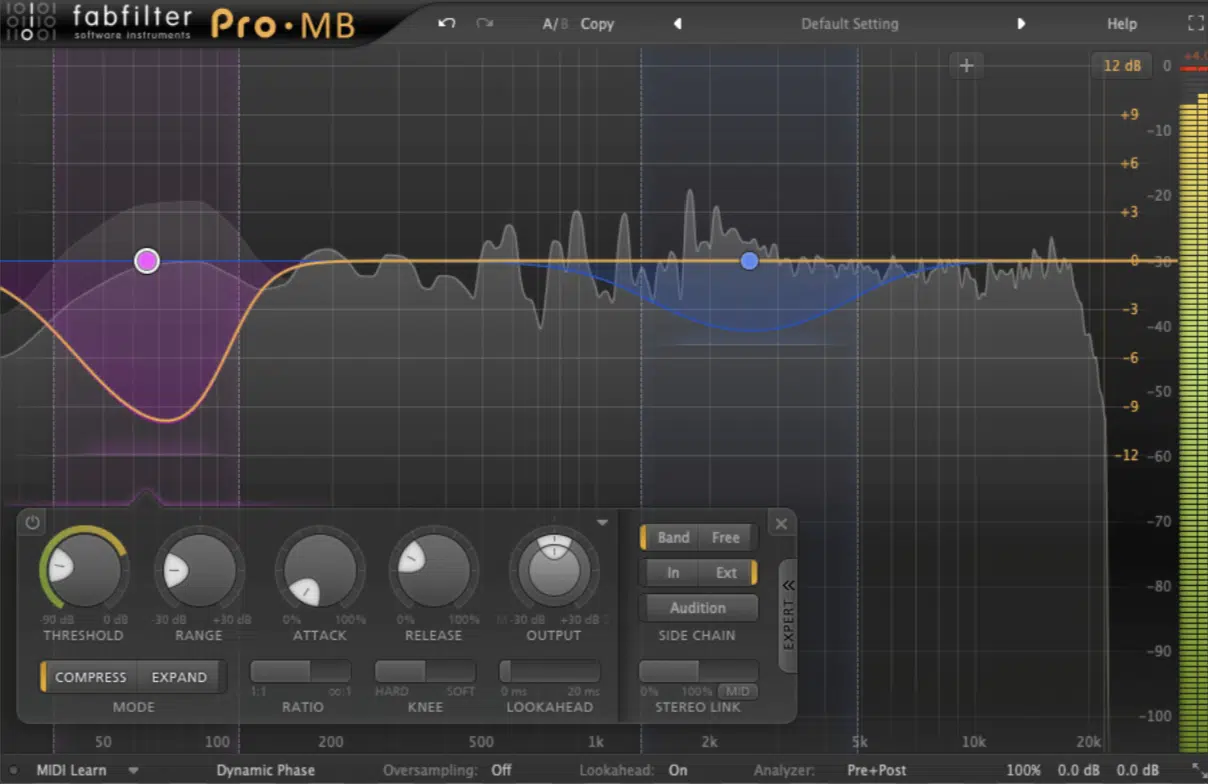
Multiband compression is awesome when you need to shape the tone and dynamics of broader frequency zones, especially across buses and full mixes.
For example, if your kick has a huge boom from 50–80 Hz, you can set a low band in that range, threshold around –24 dB, ratio at 4:1, with a slower attack around 35 ms.
This way the transient hits clean, and a longer release at 150 ms to gently pull down the tail 一 giving your low end groove control without flattening its impact.
On vocals, using a midrange band from 800 Hz to 3.5 kHz with a 2.5:1 ratio can help smooth overly forward presence without dulling the overall tone.
You can even add subtle lift to the high band…
To do so, try a parallel multiband chain where the top band (10–18 kHz) gets slightly compressed with a 1.5:1 ratio and then blended back in to give air without harshness.
Another dope move is compressing the low mids of a drum bus (200–500 Hz) with a soft knee and about 2–3 dB gain reduction to get them to sit tight without clutter.
NOTE: One thing that always comes up is dynamic EQ vs multiband compression when it comes to vocals. But, if you’re trying to add gentle body and glue across the spectrum, multiband will usually feel smoother.
And don’t forget to always check gain reduction meters per band.
If one’s getting crushed and the others aren’t moving, your crossover settings might need reworking and you need to get on that ASAP.
Pro Tip: Common Mistakes People Keep Making
A common mistake is stacking dynamic EQ and multiband compression without a plan, which makes them end up pulling down the same frequencies twice.
This absolutely kills movement and makes the mix feel flat.
For example, if your dynamic EQ is already dipping 3.2 kHz on a vocal, don’t set your multiband comp’s midrange band to do the same thing.
Unless there’s a really good reason, of course.
Another issue is overdoing threshold settings, like setting a band too low (–35 dB) when you only need a subtle touch.
It’s easy to assume more reduction equals more control, but in the dynamic EQ vs multiband compression debate, subtlety takes the W every single time.
Also, don’t forget to always solo your bands when setting parameters 一 don’t just trust your full mix output.
My Favorite Multiband Compressor/Dynamic EQ Plugins Worth Checking Out
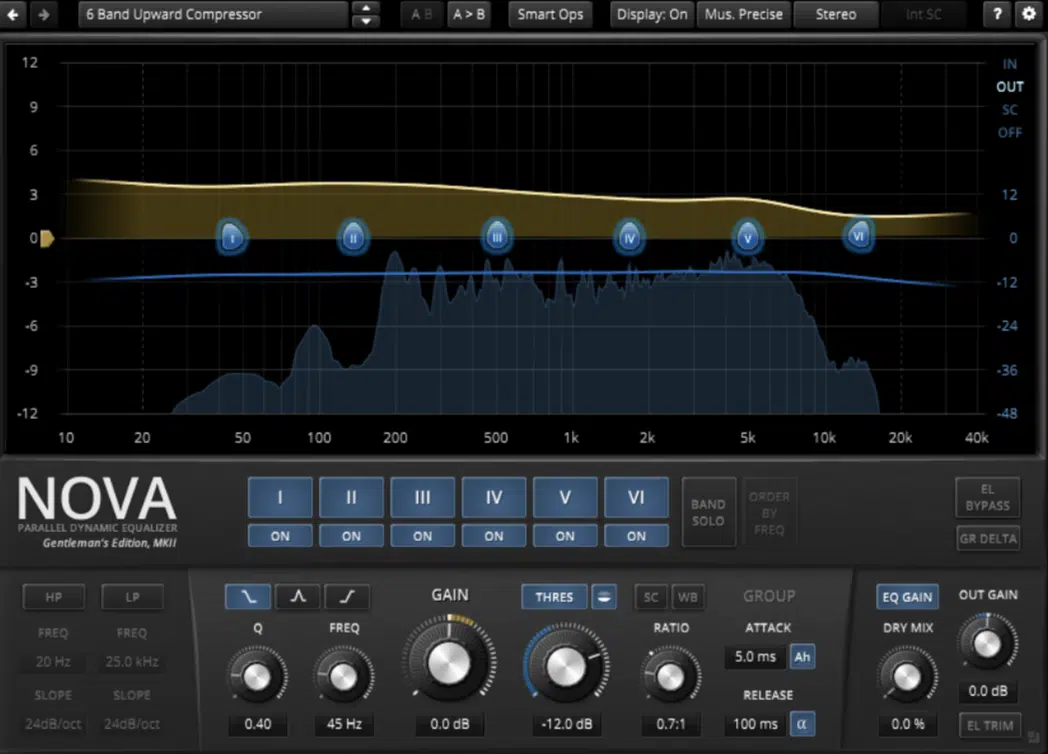
When it comes to dynamic EQ vs multiband compression, the plugins you use can make or break how transparent (or musical) your results sound.
My go-to for dynamic EQ is FabFilter Pro-Q 4 all day, hand’s down.
When you set a dynamic band at 4.5 kHz with a Q of 2.2, attack around 5 ms, and a threshold of –20 dB, you’ll instantly tame harshness in vocals without affecting tone.
For multiband compression, FabFilter Pro-MB still leads the pack.
It’ll gives you full control over each band’s crossover and dynamic response.
I usually run 4 bands with slopes at 24 dB/octave, compressing mids and highs gently (2:1 ratio, 30 ms attack, 80 ms release), but it’s dealer’s choice.
TDR Nova is another good option if you want a free but surgical dynamic EQ 一 great for ducking boxiness on a guitar bus at 400 Hz with precise Q and threshold shaping.
And for harsh, pokey frequencies that pop in and out (like ear-piercing 7–8 kHz hi-hat spill), Soothe 2 is basically automatic dynamic EQ.
It dynamically pulls back just what’s harsh, and I suggest you keep the sharpness between 6–7 with the depth around 40–50% for transparency.
Whether you lean toward dynamic EQ vs multiband compression really comes down to the plugin’s interface and flexibility.
NOTE: Some plugins like Neutron 5 blur the line between both, letting you build hybrid chains that work in the real world, so definitely don’t overlook those either.
Bonus: Advanced Techniques for Dynamic EQ vs Multi-band Compression
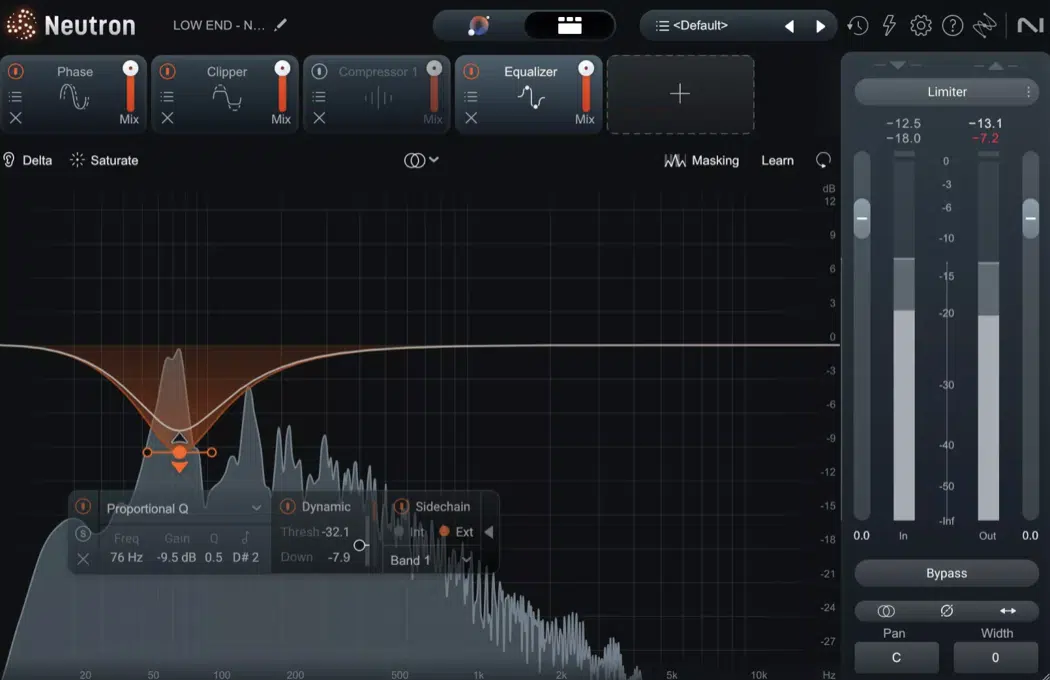
Now that you’ve got the fundamentals down, let’s get into some more advanced tricks that separate solid mixes from pro ones (my favs). These show-stopping techniques push the creative potential of dynamic EQ vs multiband compression way past simple tone shaping and into real mix control. So, let’s get to it.
Ducking Instrumental Layers Without Killing Transients
First up let’s talk about using a multiband compressor to duck pads, guitars, or synths when the vocal hits 一 but only in the specific frequency where they clash.
For example, you can take a pad bus and throw on Pro-MB and isolate the 2–4 kHz band (which often overlaps with vocal intelligibility).
Then, set it to respond to an external sidechain from the lead vocal.
Make sure to dial in a 3:1 ratio, a soft knee, attack around 25 ms so you don’t squash the initial transient, and release around 120 ms to let the pad smoothly come back in.
This keeps the pad lush and wide while still leaving space for the vocal to cut through without harsh EQ dips.
And if you tried this same move with a dynamic EQ, you’d have to manually automate multiple nodes or deal with narrower control.
Which, by the way, is another great example of how dynamic EQ vs multiband compression each have their strengths in specific roles.
PRO TIP: Always A/B the pad with the sidechain bypassed because you certainly want clarity, not a hole in the mix, trust me.
Dynamic EQ in Serial for Ultra-Precise Vocal Shaping
One of the cleanest ways to sculpt a vocal is by stacking multiple dynamic EQs in serial 一 each one targeting a specific problem without overworking a single plugin.
For example, you can start with one band around 250 Hz to tame muddiness, using a:
- Q of 1.6
- Threshold at –20 dB
- Gain reduction cap of 2.5 dB
Then stack a second instance focused on 2.7 kHz for nasality with a tighter Q of 2.8, threshold at –18 dB, and faster attack around 4 ms.
Finally, a third band at 6.4 kHz for crisp de-essing, with the threshold dialed to –22 dB and release around 80 ms, lets you smooth high-end harshness without killing the vibe.
This modular technique keeps the vocal sounding natural while giving you pinpoint control over problem spots that fluctuate differently throughout the track.
NOTE: If you’re running this setup on a mobile device or lightweight session, a plugin like Pro-Q 4 in zero-latency mode keeps your CPU in check without sacrificing clarity.
In the bigger picture of dynamic EQ vs multiband compression, serial dynamic EQ offers surgical precision that multiband just can’t match.
So, if you’re dealing with rapid, frequency-specific changes in a lead vocal, it’s key.
Last little note here would be to watch for stacking gain reductions by keeping each band under 3 dB max to avoid over-processing and losing your vocal’s energy.
Cross-Sidechain Between Buses
If you want to clean up frequency masking between entire groups, like a vocal bus and a guitar bus, cross-sidechaining with multiband compression is fire.
And, it’s really not used that much, so you get to look like a real G with this one.
Let’s say your guitars are muddying up the vocal’s low mids around 400–600 Hz…
You can use a multiband compressor on the guitar bus, set the mid band crossover from 300–800 Hz, threshold at –26 dB, ratio 2.8:1, and sidechain it to the vocal bus.
Now every time the vocal hits, that pocket gets dipped just enough (maybe 2 dB) so the voice sits cleanly on top.
What makes this technique stand out in the dynamic EQ vs multiband compression conversation is that multiband lets you shape wide tonal areas with subtlety.
Dynamic EQ, on the flip side, would require more granular node setup and a more complex routing system.
If you’re on a DAW like Logic or Ableton, use sidechain routing and keep your release time in the 90–120 ms range for a super smooth fade back.
It also improves background clarity and stereo imaging without having to cut into your elements statically, so that’s another big plus right there.
PRO TIP: Don’t be afraid to experiment with different frequency bands.
For vocals vs synths, sometimes the conflict is actually in the upper mids, like 2.2–3.5 kHz, especially if you’re monitoring with headphones that emphasize that range.
Final Thoughts
And there you have it: absolutely everything you need to know about dynamic EQ vs multiband compression.
By using these techniques, you’ll seriously level up your dynamic control, fix mix issues with precision, and get your tracks to sound polished and professional all day.
Plus, you’ll be able to clean up muddiness, tame harsh frequencies, shape tonal balance, and sculpt the frequency spectrum like a boss.
Just remember that it’s all about making smart decisions based on the input signal and knowing how to target the right frequency ranges.
Otherwise, you’ll just end up smothering your mix or fighting phasing issues, and nobody wants that.
And, as a special bonus, since we mentioned vocals so much, I thought I’d give you access to the absolute sickest Free Vocals in the entire industry.
Inside, you’ll get 20 royalty-free vocal loops, chops, and one-shots that are professionally recorded and ready for immediate use.
Whether you want to clean up harsh sibilance using a dynamic EQ, or use a multiband compressor to gently glue vocal layers together, these samples are perfect for practicing everything we just covered.
With dry and wet versions included, you’ll have the flexibility to either process from scratch.
Or, use the polished versions to test your chain setups and compare before/after results in real-time, dealer’s choice.
Bottom line, when it comes to both dynamic EQ and multiband compression, just don’t forget to match your settings to the actual problematic frequency.
And make sure to always listen in context (very important).
This way, you can control tone without flattening dynamics, and clean up messy frequency bands while keeping the vibe intact.
Your tracks will always sound intentional, balanced, and locked-in, and you’ll know how to shape energy like an absolute expert.
And never ever think the sky’s the limit 一 you can always push your creativity further and fine-tune the signal’s frequency content in ways that feel mind-blowing.
Until next time…






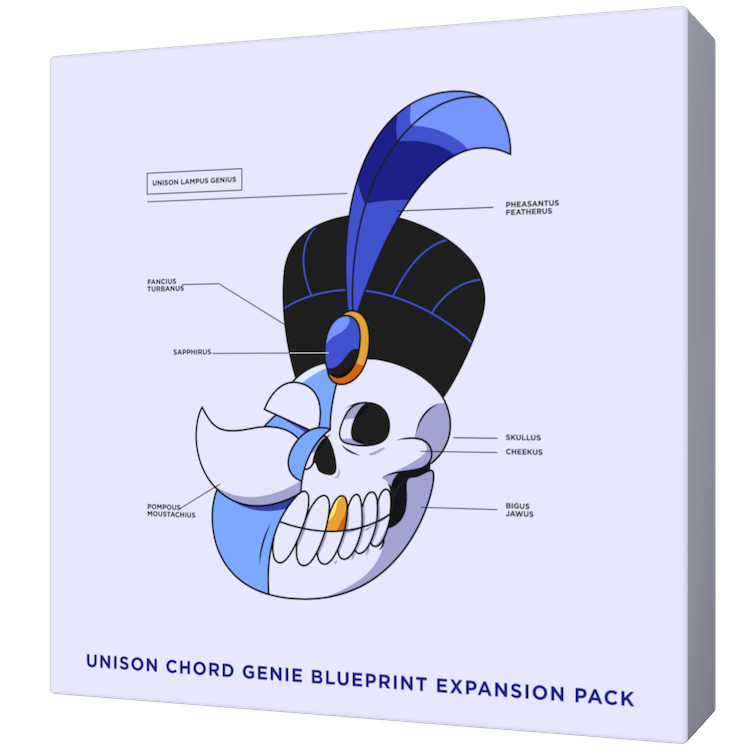
Leave a Reply
You must belogged in to post a comment.